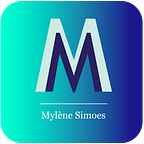UX Case Study: Food Sustainability
Project 1
This case study will present the user-centered design approach and a possible solution on a mobile application, around organic food accessible to all via producers.
// Intro
A trend has emerged in recent years around “eating organic”, “eating better” and “well being”. At the same time, the food industry is expanding and developing a many products and brands related to organic food. And the producers in all this? Can the customer really control the origin and quality of his products? Even though there has been a rise in consciousness on the importance of good nutrition, organic food is not accessible to everyone.
“How might we help communities access the seasonal produce of their region, fueling fair and honest relationships between producers and customers while ensuring food safety for all ?”
Brief
The challenge with my team was to solve a wicked problem. The emphasis is laid on the access for people to organic foods. As UX designers, we started our strategy based on UX research in order to later develop and conceptualize a mobile application.
// Research & Data Analysis
To understand people about their needs, motivations and see the pain points, we conducted user research. This lean survey canvas helped us what questions we needed answers to. Secondary research is important, with our knowledge about the topic and all the information found online, we gathered as much relevant information to fill this out.
Surveys
- Targeting the profile of our users
- Measure their commitment to eating organic food
- Why are they consuming organic food ?
- Why are they not consuming organic food ?
- What are their obstacles ?
To gather more insights we proceeded to quantitative research with a survey and reached 134 people by the end of the week. It is a good way to analyse customers behaviour, understand them and have a statistical analysis.
“Is Quantitative Datas”
We also conducted 5 interviews.
Interviews
- 5 people Male/Female
- Measure their commitment to eating organic food
- Why they consume organic / Why don’t they consume?
- What are their obstacles?
- What are their feelings, their emotions?
The interviews allowed us to have more precise and interesting data. We were able to put ourselves more in the shoes of the users and their needs
“Is Qualitative Data”
To get a deeper analysis, we conducted qualitative research with 5 interviews. This process is more about open questions, seeking more in depth answers. The mains quotes for example were : “I think organic food is about health and wellness.” ,“Well in your head and well in your body.”
Taking the quantitive data from the survey’s, and qualitative data from the interviews, we constructed an affinity map. The main insights were “a lack of information about organic food”, “it is overpriced” and “the path from the producers to consumers is uncertain”.
Affinity Diagram
We established 4pain points to focus on:
- Lack of information on “Organic food”
- Short circuit not obvious
- Overpriced on some sellers
- Price and budget conscious
Empathy map
This is an empathy map that helped us being in the consumers’ shoes. It is used to understand our users through their situation, acts, feelings and emotions.
Mind Mapping
It is a visual representation of our ideas around a central subject, “How might we create a better relationship between producers and customers.” This brainstorming group activity technique helps generate more ideas and find a deeper meaning to a subject.
// Persona & User Journey
With all the research we have done, we have created our main character. This fictional character will represent our typical user to clearly guide us in applying the scenario and solutions in the ideation process.
Alexandra Dupond the active woman.
Goals : She would like more seasonal organic products. She wants organic food to be more about wellness and health.
However as pain points, she thinks organic food is pricey and she has fears and doubts about organic products.
This is our primary persona. She represents our final target users based on the insights we found previously.
To help us further empathize with the user to find opportunities and make their journey better, we decided to create a User journey map.
This scenario allows us to better understand the problems encountered by Alexandra. She has a need for more information about the products she buys. It would be easier if she could buy directly from the producers.
According to Alexandra’s frustrations, we find a problem statement and an hypothesis statement. We will be based on these for the brainstorming.
Also here are the three “How might we” that sum up the actual issues for our target user group.
We will propose to you a solution to make her a better journey with a prototype.
Ideation & Sketches
We propose a mobile application that would provide Alexandra with the possibility to buy directly from producers and have it delivered more easily, integrating home, work or even truck deliveries. Here is our solution :
The brainstorming technique we used is Crazy 8s :
8 different ideas in 8 minutes. Here are the prototypes solutions in low fi by our dream team.
Here is the main task of our app…
Low- Fidelity Wireframes
We took our ideations and sketches and proceeded with the low- fidelity wireframes.
Thanks to the app we can find the nearest products, learn about the source and compare the price. The products come directly from the producers so no need to shop at the big chain grocery stores. Everything leads to a better relation between the producers and consumers.
Here is the first part of our UX Designer research in order to bring a solution adapted to our personas. This proposal will then be tested and redesigned to offer an application as adapted as possible to the users.
